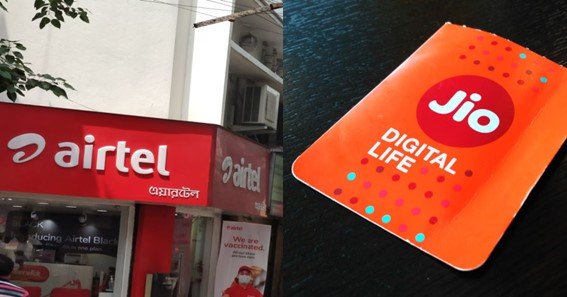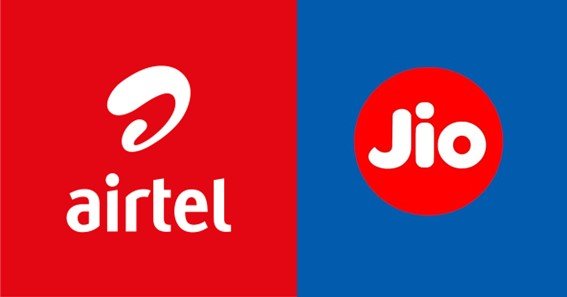Bharti Airtel, Reliance Jio, and Vodafone Idea are the three dominant players in India’s telecom industry, each with its strategies, strengths, and challenges. As the competition intensifies, these companies are vying for leadership in market share, revenue, and technological innovation. But who is truly leading the telecom war in 2024? Let’s dive into a detailed comparison to understand where Bharti Airtel stands against its competitors.
Market Share and Subscriber Base
Reliance Jio: The Market Leader
Reliance Jio continues to lead the Indian telecom market with a substantial market share of around 35%, boasting a subscriber base of over 430 million as of mid-2024. Jio’s aggressive pricing strategy and comprehensive digital ecosystem have helped it capture and maintain this leadership position since its launch in 2016.
Bharti Airtel: Strong Performance
Bharti Airtel follows closely with a market share of approximately 31.56% and a subscriber base of 364 million. Airtel has distinguished itself by offering superior network quality, particularly in terms of Average Revenue Per User (ARPU), which is higher than Jio’s. Airtel’s focus on premium customers and higher ARPU has helped it maintain strong profitability, even if it lags behind Jio in total subscriber numbers.
Vodafone Idea: Struggling to Keep Up
Vodafone Idea (Vi) remains the third player but is struggling with a shrinking market share, now holding about 20%. The company has faced significant financial difficulties, leading to a higher churn rate and declining subscriber base, making it increasingly challenging to compete with Airtel and Jio.
Financial Performance
Bharti Airtel: Focus on Profitability
Bharti Airtel’s strategy of targeting high-paying customers has paid off, with the company reporting a net profit of ₹4,160 crore in Q1 FY25. Despite having fewer subscribers than Jio, Airtel’s higher ARPU (₹190 compared to Jio’s ₹177.2) has contributed to its strong financial performance. Airtel’s diversified revenue streams, including mobile services, broadband, and digital TV, have also helped stabilize its financials.
Reliance Jio: Revenue and Subscriber Growth
Jio, while leading in subscriber numbers, also reported strong financials, with quarterly profits that are more than double those of Airtel. However, Jio’s ARPU is slightly lower, as it focuses on a volume-driven approach. Jio’s strategy involves bundling services like JioFiber and JioTV, which have further solidified its market dominance.
Vodafone Idea: Financial Struggles
Vi continues to grapple with financial instability, reporting losses in consecutive quarters. The company’s survival largely depends on external funding and its ability to reduce subscriber churn and increase ARPU. Vi’s position remains precarious, with limited resources to compete effectively against Jio and Airtel
Technology and Innovation
5G Rollout
Airtel has been ahead in rolling out 5G services, already deploying 5G in several cities across India. The company’s focus on both Standalone (SA) and Non-Standalone (NSA) 5G networks gives it a technological edge over Jio, which has primarily focused on the NSA approach
Digital Ecosystem
Jio’s strength lies in its expansive digital ecosystem, which includes platforms like JioSaavn, JioTV, and JioFiber. This ecosystem not only attracts new users but also encourages existing customers to remain within the Jio environment, leveraging bundled services for maximum value
Conclusion: Who’s Winning?
While Reliance Jio leads in market share and subscriber base, Bharti Airtel is giving stiff competition, particularly in terms of profitability and ARPU. Airtel’s focus on quality services, high ARPU customers, and technological innovation positions it well for long-term success. However, Jio’s aggressive expansion and comprehensive digital ecosystem make it the overall leader in the telecom war, at least for now.
Vodafone Idea remains the underdog, struggling with financial difficulties and a shrinking market share. The telecom war is a two-horse race between Jio and Airtel, with each company leveraging its strengths to capture a larger share of the booming Indian telecom market.

FAQ
1. What is Bharti Airtel’s market share?
Bharti Airtel holds a market share of approximately 31.56% in the Indian telecom sector.
2. How does Airtel’s ARPU compare to Jio’s?
Airtel has a higher ARPU of ₹190, compared to Jio’s ₹177.2, indicating a focus on premium customers.
3. Who leads the Indian telecom market?
Reliance Jio leads the Indian telecom market with a 35% market share and the largest subscriber base.
4. What are the financial challenges faced by Vodafone Idea?
Vodafone Idea is struggling with financial instability, reporting losses, and a declining subscriber base, making it difficult to compete with Jio and Airtel.
5. How is Airtel positioned for the future?
Airtel is well-positioned for the future with a strong focus on profitability, high ARPU, and technological innovations like 5G deployment.
